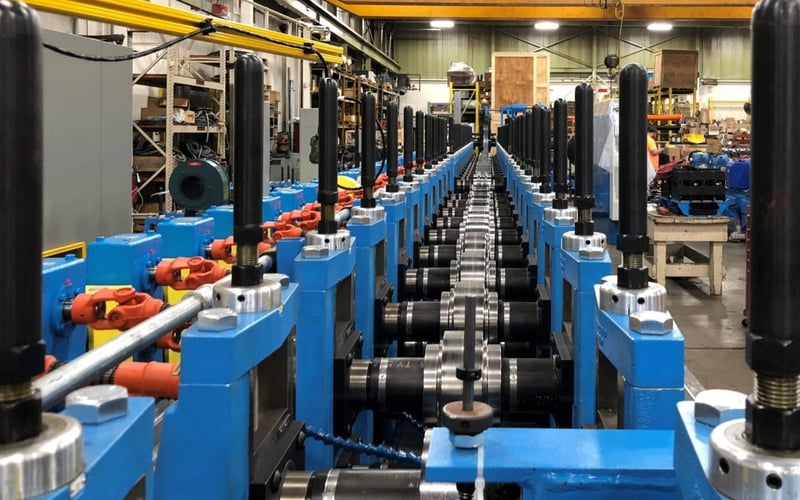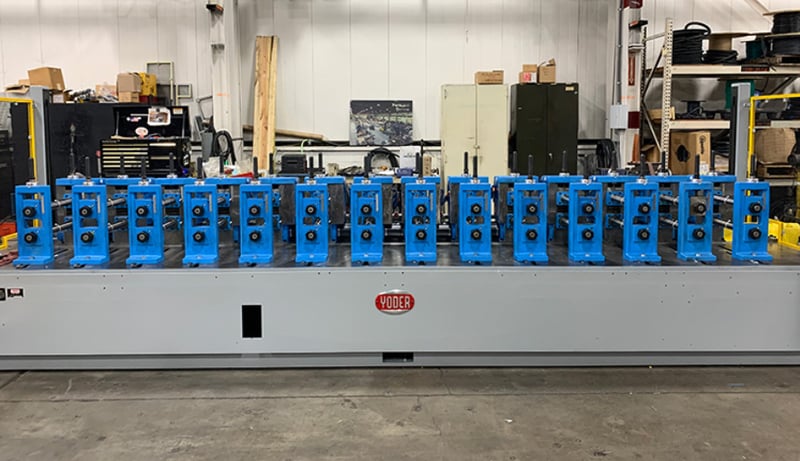Roll forming is a versatile and efficient metalworking process that has revolutionized the manufacturing industry. By understanding the intricacies of roll forming, one can unlock endless possibilities for creating complex and precisely shaped metal components. In this blog post, we will explore the world of roll forming, delving into its principles, applications, benefits, and the key factors that contribute to its success.
What is Roll Forming?
Roll forming is a continuous metal forming process that utilizes a series of rolls to progressively shape a flat metal strip into a desired profile. By passing the strip through multiple sets of rolls, each designed to perform a specific bending operation, the material gradually takes the desired shape. The process can accommodate various metals, including steel, aluminum, copper, and stainless steel.
How Does Roll Forming Work?
Roll forming relies on a carefully orchestrated sequence of events. The process typically involves an uncoiler to feed the material, a series of forming stations with adjustable rolls, and a cut-off mechanism. Each forming station bends the material incrementally, using a combination of stretching, bending, and compressing actions. The final step involves cutting the formed profile to the desired length.
Applications of Roll Forming
Roll forming finds applications across numerous industries, owing to its versatility and cost-effectiveness. Some common applications include:
- Automotive industry: Roll-formed parts are widely used in vehicle frames, structural components, and trim pieces.
- Construction industry: Roofing panels, wall studs, and door frames are often produced using roll forming.
- Shelving and storage systems: Roll-formed profiles are integral to creating efficient and customizable storage solutions.
- Appliance manufacturing: Roll forming is used to fabricate components for refrigerators, washing machines, and other household appliances.
- Electrical enclosures: The precise and repeatable nature of roll forming makes it ideal for manufacturing electrical cabinets and enclosures.
Benefits of Roll Forming
Roll forming offers several advantages over alternative metal forming methods.
- Design flexibility: Roll forming enables the production of complex profiles with consistent quality and tight tolerances.
- Cost-effective production: The high-speed nature of roll forming allows for rapid production, reducing labor costs.
- Material optimization: The process minimizes material waste, making it an environmentally friendly option.
- Increased strength: Roll-formed parts often exhibit enhanced strength characteristics due to the work-hardening effect during the forming process.

Key Considerations for Successful Roll Forming
To achieve optimal results in roll forming, certain factors must be taken into account.
- Material selection: The choice of material affects the formability, durability, and overall performance of the finished product.
- Tooling design: Properly designed roll sets are crucial for maintaining accurate profiles and preventing defects.
- Lubrication and cooling: Adequate lubrication and cooling help minimize friction and heat, ensuring smooth material flow and preventing surface imperfections.
- In-line quality control: Continuous monitoring of dimensions, surface finish, and other quality parameters is essential for maintaining consistent product quality.
In conclusion, roll forming is a powerful metalworking process that offers endless possibilities for creating complex and precisely shaped metal components. By understanding the principles and considerations associated with roll forming, manufacturers can unlock its full potential and harness its benefits across various industries. Whether you're an engineer, designer, or simply curious about metal fabrication, roll forming is an art worth exploring and mastering.
Remember, the key to successful roll forming lies in a deep understanding of the process, careful material selection, meticulous tooling design, and consistent quality control. So, embrace the world of roll forming and unlock the door to endless opportunities in metal fabrication.



.jpg)